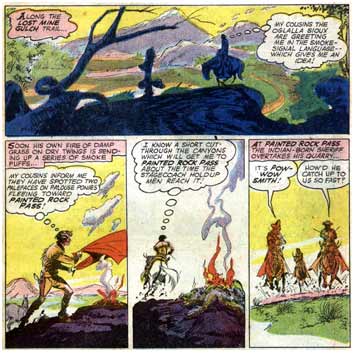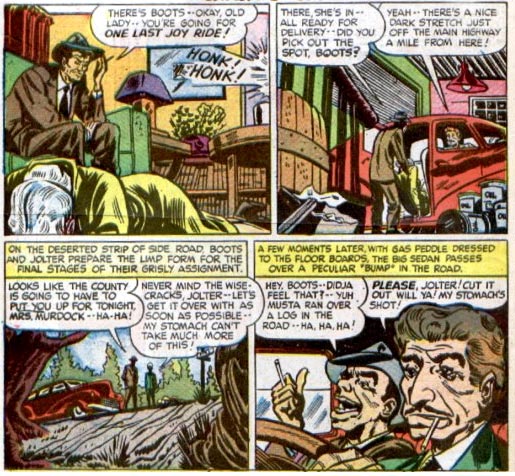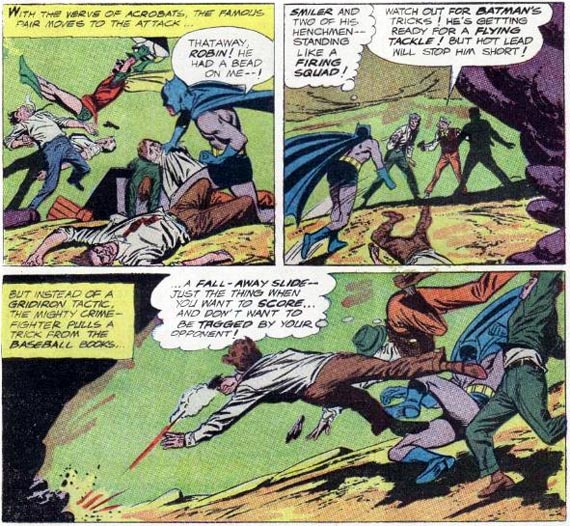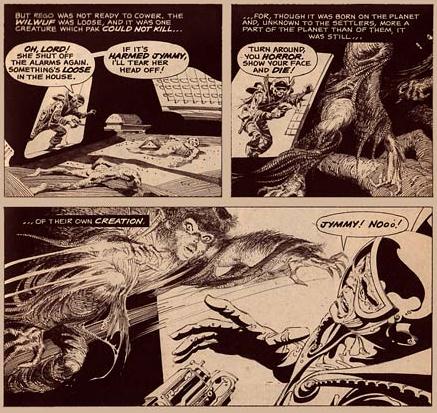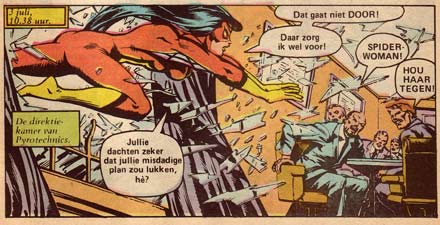Carmine Infantino was a legendary comic book artist from both the Golden Age and the Silver Age of Comic Books, and the former editorial director of DC Comics. Born in Brooklyn, New York City into a family of Italian origins, young Infantino began his career in comic books while in high school. He was part of the first generation of comic book fans. Too young to be drafted during the war, he got the opportunity to replace the men he had idolized just a few years before. He did his first jobs for comic book packager Harry "A" Chesler, and worked with Frank Giacoia as the inker of the 'Jack Frost' feature for Timely's USA Comics in 1942. Infantino would remain associated with Giacoia, who became his inker throughout the 1940s to 1960s.
Infantino also produced features like 'Airboy' and 'The Heap' for Charles Biro's shop, published in comic books by Hillman Periodicals. He enrolled in the Art Students League at age 19, and subsequently attended the Brooklyn Museum of Art. He also made contributions to Fawcett Comics and Holyoke Publishing before beginning his longtime association with DC Comics (National Periodicals). His first work was a 'Johnny Thunder' story for Flash Comics in 1947, in which he created the 'Black Canary', but he was mainly noted for his regular work on Golden Age 'The Flash', 'Green Lantern' and 'Justice Society of America'.
'Pow-Wow Smith' (Western Comics, 1959).
While in his 20s, Infantino returned to the Art Students League, where he was influenced by the impressionist paintings by Edgar Degas. His art also changed angular and rough to a design strongly influenced by the fine-line illustrations of pulp artists Edd Cartier and Lou Fine. He remained active for DC in the 1950s, drawing romance, horror, crime, science fiction and western stories. He also freelanced for Kirby and Simon's Prize Comics, for which he drew the 'Charlie Chan' feature.
'Charlie Chan'.
Infantino's best-remembered work is the revived and redesigned version of DC's 'The Flash', which he drew from scripts by Robert Kanigher for eleven years, from 1956 to 1967. This new boost to the superhero genre is generally called the beginning of the Silver Age of Comics. During this period, he also drew the comics 'Adam Strange' and 'Deadman' in Strange Adventures. He was responsible for the revival of the 'Batman' comic with writer John Broome in 1964.
'Batman'.
By 1966-1967, Infantino was designing new covers for the entire DC line. He was subsequently made the company's editorial director. He edited titles like 'Bomba', 'Bat Lash', 'Captain Marvel', 'The Shadow', 'Green Lantern/Green Arrow' and the 'Tarzan' comic books. During his tenure, he hired artists like Dick Giordano, Neal Adams and even Marvel's Jack Kirby to work on DC titles, and made Joe Orlando, Joe Kubert and Mike Sekowsky editors. He was made publisher in 1971. He did several attempts to halt the decline of circulation, at first with a price increase, but also with the creation of new features like the 'Human Target' and the historical Marvel/DC crossover 'Superman vs. the Amazing Spiderman'.
Comic art by Infantino, 1979.
Infantino turned to freelancing and worked on titles published by Warren Publishing and Marvel, including 'Star Wars', 'Spider-Woman' and 'Nova'. He returned to DC in the early 1980s with a revival of the 'Dial H for Hero' feature with Marv Wolfman. In 1982, he took on 'The Flash' once again, and worked on the comic book version of the TV series 'V', 'The Daring New Adventures of Supergirl' and the 'Red Tornado' mini series.
Infantino succeeded Marshall Rogers as the artist of 'Batman' newspaper strip, written by William Messner-Loebs and John Nyberg, in 1990-1991. He taught at the School of Visual Arts before retiring. He remained in the spotlights through his regular appearances on comic conventions and through the two books he wrote about his life and career. One of the last artists from the Golden Age of comic books, Carmine Infantino passed away in April 2013 at age 87.
Carmine Infantino was an influence on John Romita, Sr..
'Spider-Woman'. Dutch-language version.




